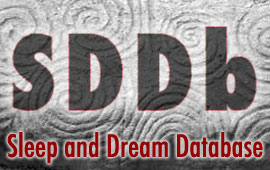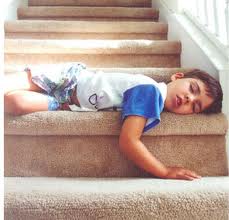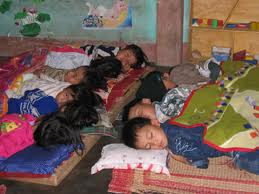 Thanks to the help of Bill Domhoff and Adam Schneider (and of course Kurt Bollacker), the set of 981 Hall and Van de Castle male and female “Norm Dreams” are now in the SDDb and available for study using the database tools. Long available on the Dreambank.net website, the Norm Dreams have been widely cited in research literature for many decades, and it’s a big boost to the SDDb to include this historically significant dream collection.
Thanks to the help of Bill Domhoff and Adam Schneider (and of course Kurt Bollacker), the set of 981 Hall and Van de Castle male and female “Norm Dreams” are now in the SDDb and available for study using the database tools. Long available on the Dreambank.net website, the Norm Dreams have been widely cited in research literature for many decades, and it’s a big boost to the SDDb to include this historically significant dream collection.
Calvin Hall gathered these dreams from 100 female and 100 male college students from two colleges near Cleveland, Ohio, from 1947-1950. Each student provided five dream reports of no less than 50 words and no more than 300 words in length. The complete set of 1000 dreams served as the foundation for Hall’s book with Robert Van de Castle, The Content Analysis of Dreams in 1966. Hall and Van de Castle called them the Norm Dreams because their content frequencies could be used as a basis for comparison with other groups, as a measuring stick to determine what counts as normal or abnormal proportions of dream content.
That’s a strong claim, of course, too strong perhaps, but only because Hall and Van de Castle’s data were relatively limited. The goal of trying to identify large-scale, widely distributed patterns in dreaming remains a worthwhile pursuit, and now we have much more data and much better tools than Hall and Van de Castle had to seek them out.
The first thing I did once the Norm Dreams were in the SDDb was to try a series of identical word searches in the Dreambank and the SDDb. I wanted to insure that the original texts (981 remain, 19 were lost some time ago) were exactly the same in both databases and that their search results were directly comparable.
Phew! Every word I searched for in the Norm Dreams in the SDDb yielded the same results as a search for the same word in the Norm Dreams in the Dreambank. (Individual words being searched in the Dreambank have to be framed with^ ^. For example, to search for the word anger, the term must be typed ^anger^.)
Next, I wanted to check the Norm Dreams for their frequencies on the SDDb 40-category template and compare these results to the frequencies I found using an earlier prototype of this template in my 2009 paper in Consciousness and Cognition, where I reported word search findings on the Norm Dreams in the Dreambank. I have made several minor changes and additions to the 40 categories since 2009, so I expected the results now to be slightly higher but essentially the same.
Again, the results were reassuring (although I didn’t have the counts from 2009, just the percentages). When I searched the Norm Dreams for each of the SDDb’s 40 word categories, the frequencies were the same or slightly higher as the frequencies I found in 2009 applying similar categories to the Norm Dreams in the Dreambank. The Earth and Transportation categories had the biggest increase between the two analyses, due to the addition of several new terms to these two categories when I originally programmed the SDDb’s template.
The one exception was the Weather category, which initially showed a lower frequency in the SDDb analysis compared to the earlier Dreambank analysis. When I investigated the differing results more closely, I found I had not done a very good job translating all the weather-related words into the SDDb template. Several words were missing from Weather category in the SDDb template that I had used in the Dreambank analysis.
Doh!
When I performed an adjusted SDDb search including these previously excluded words, the results were back in line with the expected similarity between the two databases. (This makes me think I’ll need to re-check all the categories when I next get a chance to upgrade the template.)
These initial findings have given me confidence that the Hall and Van de Castle Norm Dreams can be studied using the word search tools of the SDDb in a way that’s consistent, reliable, and open to comparison with analyses from the Dreambank or any other research project making use of the Norm Dreams.
All of this means it’s getting easier and easier to make apples-to-apples comparisons of dream content using word search technology.
I doubt the dreams of 200 college students from 1940’s Ohio can give us a complete representation of all human dreaming (though there are actually many intriguing “big dream” experiences in the set). But I share Hall and Van de Castle’s goal of identifying broad patterns of dream content. I’m hopeful that word search methods, applied to larger collections of data from more diverse groups of people, will help us move closer to that goal.
Note: the statistical table I created with the frequencies for the 40 categories can be found here.




